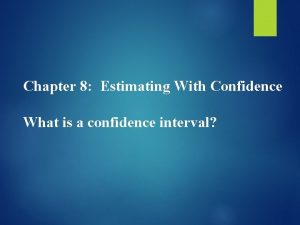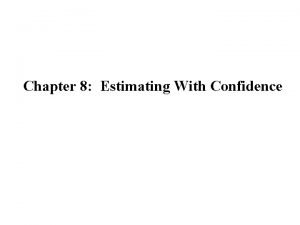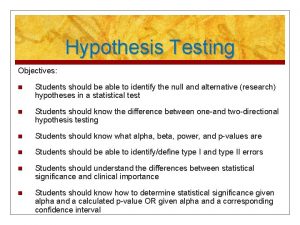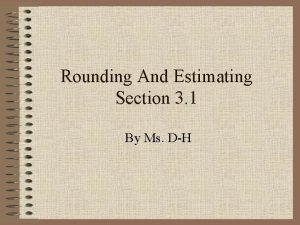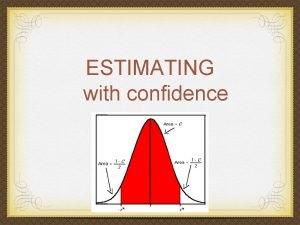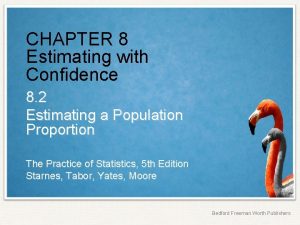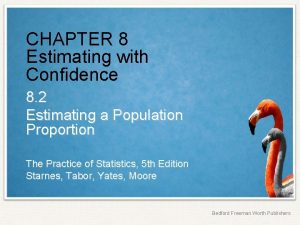CHAPTER 8 Estimating with Confidence 8 1 Confidence






- Slides: 6

CHAPTER 8 Estimating with Confidence 8. 1 Confidence Intervals: The Basics The Practice of Statistics, 5 th Edition Starnes, Tabor, Yates, Moore Bedford Freeman Worth Publishers

Confidence Intervals: The Basics Learning Objectives After this section, you should be able to: ü DETERMINE the point estimate and margin of error from a confidence interval. ü INTERPRET a confidence interval in context. ü INTERPRET a confidence level in context. ü DESCRIBE how the sample size and confidence level affect the length of a confidence interval. ü EXPLAIN how practical issues like nonresponse, undercoverage, and response bias can affect the interpretation of a confidence interval. The Practice of Statistics, 5 th Edition 2

Constructing Confidence Intervals Why settle for 95% confidence when estimating a parameter? The price we pay for greater confidence is a wider interval. When we calculated a 95% confidence interval for the mystery mean µ, we started with estimate ± margin of error This leads to a more general formula for confidence intervals: statistic ± (critical value) • (standard deviation of statistic) The Practice of Statistics, 5 th Edition 3

Constructing Confidence Intervals Calculating a Confidence Interval The confidence interval for estimating a population parameter has the form statistic ± (critical value) • (standard deviation of statistic) where the statistic we use is the point estimator for the parameter. Properties of Confidence Intervals: • The “margin of error” is the (critical value) • (standard deviation of statistic) • The user chooses the confidence level, and the margin of error follows from this choice. • The critical value depends on the confidence level and the sampling distribution of the statistic. • Greater confidence requires a larger critical value • The standard deviation of the statistic depends on the sample size n The Practice of Statistics, 5 th Edition 4

Using Confidence Intervals Wisely Here are two important cautions to keep in mind when constructing and interpreting confidence intervals. ü Our method of calculation assumes that the data come from an SRS of size n from the population of interest. ü The margin of error in a confidence interval covers only chance variation due to random sampling or random assignment. The Practice of Statistics, 5 th Edition 5

Confidence Intervals: The Basics Section Summary In this section, we learned how to… ü DETERMINE the point estimate and margin of error from a confidence interval. ü INTERPRET a confidence interval in context. ü INTERPRET a confidence level in context. ü DESCRIBE how the sample size and confidence level affect the length of a confidence interval. ü EXPLAIN how practical issues like nonresponse, undercoverage, and response bias can affect the interpretation of a confidence interval. The Practice of Statistics, 5 th Edition 6
